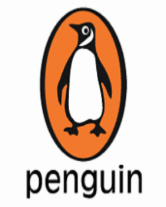Experiencing Literature
Books should be at the core of literacy development for all children. Students may be encouraged to respond to literature in avariety of ways (oral, written, artistic, dramatic responses) and to personally connect to books. Here are some activities usingliterature that can make learning engaging for all students:
Booktalks
Children may need to be encouraged to try varied genres of books or to choose books in general, especially if read-alouds and libraryvisits are not in their background experiences. Teachers and librarians can prepare short, motivating oral presentations about a bookto stimulate children's interest in reading it. Students can also learn to give booktalks to entice peers to read favorite books in theupbeat style popularized on the public television program "Reading Rainbow."
Sketch to Stretch
A reading strategy especially good for English Language Learners has students draw and share images they visualized while reading. They may also sketch a personal response to a book, using art as a medium of self-expression.
Radio-Read
Students take turns reading aloud with a partner. It may help to pair one reader who needs support with a more proficient reader.Each reader decides when to stop (always at the end of a sentence), so the partner must follow along closely for his/her "turn" (alsocalled Pair Read and Partner Read). Partners can support each other while enjoying the independence of turn-taking decision-making.
Poetry Jams
Oral recitation of poetry is common in many Hispanic cultures. Teams of middle-grade students can prepare an oral presentation offavorite short poems, such as those written by Gary Soto in Fearless Fernie. Younger students may get started in this activity using oneof the play rhymes in Diez Deditos by José-Luis Orozco.
Characters in Clay
Most children love to create with clay, yet it is infrequently used in classrooms. With inexpensive Play-Doh clay, students can create"characters in clay" to be used in dioramas or dramatic presentations based on books. They can also fashion other simple props todepict settings in books.
Book Posters
Students can create posters advertising favorite books and display them in the classroom or the school library. This gives bilingual children the opportunity to create posters in their native languages.
Character WebPages
Help middle-grade students to create a WebPage for a book character. This activity requires a deep understanding of the character inorder to create an interesting and representative WebPage in English, Spanish, or a bilingual version.






